#I don’t know why I never saw the end of it - maybe toonami changed its time slot? but I never did.
Text
Had a revelation today in the woods. As you do.
#ra speaks#personal#I do podcasts in my head abt my obscure media interests that I could probably make actual video essays on#anyways I was thinking abt how I found casshern sins at a pivotal point in my life#if you’ve seen it you can be sure that I related way to hard to stuff like my body is failing me. I want to die. what’s the meaning of life#but I never saw the end of it. until this year. and it felt like…something. idk it was like.#this. this is what I needed. I needed the pain and fear of life acknowledged. but I also needed to be reminded to persist in spite of that.#that there’s beauty in the temporary and fragile and broken#I don’t know why I never saw the end of it - maybe toonami changed its time slot? but I never did.#maybe seeing that finale wouldn’t have stopped my depression spiral at the end of middle school#but it certainly feels like a warm soft blanket watching it now.
2 notes
·
View notes
Text
KarpReviews - Neon Genesis Evangelion (1995) and End of Evangelion
It took me a good while to really get into anime. Well, maybe that’s technically not true, as I grew up with the Pokemon and Yu-gi-oh anime series. That’s really where my exposure to the medium stopped for a long time, though. There was scattered influence, such as an ephemeral viewing of Spirited Away on Cartoon Network, and access to one of the Naruto fighting games. Ultimately, though, I hardly knew what anime was until high school. It was around this time that I would occasionally stay up late to watch Toonami on Saturdays. Toonami provided me with several of my first and favorite anime series, including Cowboy Bebop, Deadman Wonderland, and Soul Eater. One night, however, I found myself treated to something completely bizarre.
I can’t say for sure exactly what I had watched, though my current knowledge suggests it was one of the Evangelion recap movies. These are abridged versions of the series that tell the story in a more condensed format, though it’s possible I just caught a few episodes of the regular series. The show itself was overwhelmingly confusing and bizarre, with concepts my teenage mind struggled to grasp, and characters that seemed strange and depressing. It certainly didn’t help that I was watching this show in the dead of night while sleep repeatedly attempted to pull me down. I was mesmerized regardless, and the images I saw never left my mind.
It wasn’t until now that I decided to finally watch the series in its entirety. I was excited to figure out exactly what I’d seen, why the robots in the show looked the way they did, why the “monsters” had such abstract and strange designs. Most importantly, I wanted to experience one of the major pieces of Japanese animation that had influenced so much of popular media. Thankfully, Neon Genesis Evangelion did not disappoint.
To briefly summarize for those who still haven’t seen the show, the main premise is that, for one reason or another, Earth has become assaulted by powerful beings known as Angels - strange monsters that threaten humanity with their otherworldly power. An organization called NERV, led by Commander Gendo Ikari, plans to protect humanity and destroy the Angels with mysterious and strange humanoid mecha named “EVAs.” They can only be piloted by particular children, one of whom is the main character and Gendo’s son, Shinji. The Angels themselves, as well as their lore, hearken to Christianity, though in the same way that American media loosely uses Greek mythology. While the premise of the show seems to match that of other mecha, such as Gundam or Macross Saga, Evangelion is more about it’s heavy, layered theming as opposed to mecha and kaiju battles. Evangelion’s storytelling is rich and layered, yet I never found it to be overwhelming or poorly paced. Even though it’s dark tone is prevalent throughout, the battles between EVAs and Angels are still exciting and enjoyable on their own, each encounter building the stakes higher and higher, until it almost feels that everything will suddenly explode. Almost.
Visually, I think Evangelion holds up phenomenally. The animation style is instantly recognizable while still carrying the same charm that many 90′s anime have. Characters are expressive and animated when they need to be, and backdrops are detailed and colorful. I was blown away especially during the show’s numerous fight scenes. Unlike the bulky mechs featured in most media at the time, the EVAs are nimble and powerful, often performing acrobatic feats or creating stunning displays of destruction. I was absolutely captivated by the designs of the EVA’s and Angels, just like I was in high school. The EVA’s are both incredible and sinister, immediately intriguing just from their design alone. Just looking at one makes you want to know more about them. The character designs are simple but still memorable, which matches their personalities well. What I love most about the visuals of this show, however, isn’t the fluid action or expressive characters, but the implementation of long shots and surreal visuals. Several times throughout the series, the show will linger on a single frame for an extended period of time. There’s no dialogue in these segments, just ambient noise or background music. These moments are some of the most engrossing, trapping the viewer in a single uncomfortable moment, such as the gruesome aftermath of an Angel attack, or a long elevator ride following an argument between Asuka and Rei.
Speaking of, the characters in this show are truly fascinating. Nearly every character is layered and interesting, and each one has their own ways in which they deal with the pressure and terrors of the world around them. I was surprised with how much I ended up liking Shinji (during the main series that is, but we’ll get to that) whose awkward and conflicted personality can be easily polarizing to viewers. I thought Asuka was a nice foil for Shinji, and an entertaining character on her own. She is a bit rough around the edges, and her loud and often self-centered personality can be grating at times, but ultimately her presence is a positive one, and I feel she inadvertently pulls other characters out of their shells. Rei, the third part of our pilot trio, is quiet and mysterious, and she adds to a lot of the show’s intrigue. My favorite character is easily Misato. On top of keeping the younger character’s intense personalities in check, her own story is one that the show graciously gives a lot of attention to. Watching her start to work through her demons was thoroughly compelling to me, and I felt that even through her faults she always tries to be mindful of the people around her. Ryoji was another character that I was a bit worried about after his introduction, but thankfully he had much more going for him than his flirty, aloof attitude. The one person that I never got totally sold on, though, is Gendo Ikari. While he’s certainly integral to the plot, his character was too nuanced for my liking, and it dampened his impact on the story. He’s also one of the characters who I can confidently say isn’t a good person, making his presence even more distasteful. Important for sure, but generally unpleasant.
Perhaps the most memorable piece of this show is it’s music. Truly, every single track within this anime screams “iconic.” The catchy drumming of “Decisive Battle” constantly plays within my head, a track that helped every Angel encounter feel like an elaborate chess game. “Angel Attack” has a memorable, intense melody that felt appropriate for the show’s surreal and powerful monsters. Of course, nothing needs to be said about one of the most iconic anime openings ever, “Cruel Angel’s Thesis.” By far my favorite, though, has to go to “Komm, süsser Tod.” Playing during the finale of End of Evangelion, this hauntingly beautiful song fits the show perfectly, from it’s use of choir-like vocals to the chaotic mess of strings towards the end. Every song in the show’s OST is wonderful, and I often listen to various tracks while I’m working. Even if you don’t want to watch the show, I strongly urge you to check out the soundtrack anyway.
Deep within these varied, elaborate pieces, behind the catchy music and incredible action set pieces, Neon Genesis Evangelion is a show about depression. Each character struggles with this in a different way: Shinji keeps his distance from those around him, despite needing more than anything to connect to another human being. Asuka searches for validation from the people around her, becoming angry when anyone takes attention away from her, afraid that she’ll be ignored or forgotten. Rei struggles in general to feel like a real person, to become more than her birthright and her purpose. Misato tries to drown herself in her work and in alcohol, keeping herself in denial while she tries to distance herself from her past. In some ways, the EVAs represent the responsibilities of everyday life, highlighted by Shinji’s struggle to fully commit to his obligation of protecting mankind. The characters in this show are broken, messy husks, and for almost the entire show these struggles seem impossible to overcome. These themes and motifs become especially true starting with episode 16, where the show begins to slow down and focus on its characters as the final Angel threat is thwarted. Ultimately, however, the message of the original series is a hopeful one, sending the viewer off with the message that only when you’re able to help yourself can you finally start to truly connect with and help others. It’s a poignant message and one that I think the show earns by weaving it’s theme of depression throughout the entire show, not just focusing on it near the end.
The end, however, is where Evangelion becomes a truly fascinating piece of media. Part of what makes this true is that, actually, Neon Genesis Evangelion has two endings: the final two episodes of the show, and the movie appropriately titled End of Evangelion. The series has separate endings for a couple of reasons, actually. While I won’t explain it in depth here, the summarized version is that the latter episodes of Evangelion, starting with episode 16, are subjected to a bit of a paradigm shift following production issues and budget cuts. These later episodes are where the various characters’ faults take the forefront of the narrative, and the action scenes become scarce. The final two episodes take on an especially bizarre nature, analyzing the characters within the context of the show, using abstract visualization and disjointed dialogue to do so. Personally, I’ve grown to appreciate this ending. As I mentioned before, while the focus does change towards the end, I still believe the show was always more about the heavy themes than it was about the robot fights. Many, however, do not share my opinion. When the finale originally aired, many viewers were incredibly unhappy. Unreasonably so, as thousands sent angry letters and death threats to the studio, griefing the creator for his vision. They called for a different ending, one with a more satisfying conclusion, with more action and a clearer sendoff for Shinji and the other characters.
Needless to say, creator Hideaki Anno obliged them.
Releasing in 1997, End of Evangelion is perhaps the most spiteful piece of artistry ever conceived. While the original series ended with a message of hope, this film turns the series on its head and creates a narrative that simply reeks of despair. Junko Enoshima could only dream of creating something so explicitly hopeless. While Shinji takes his first steps towards healing in the original ending, this film features a Shinji who has completely and utterly given up. He’s succumbed to his base desires, numb to the world around him in a way that’s turned him into a monster. His thoughts and actions are violent and abusive, he becomes completely deaf to the needs of those around him, and in a few short minutes of this film, he becomes almost completely irredeemable. He knows he’s become a despicable shell of a human being, but he almost seems to revel in that fact. This version of Shinji is utterly useless, and his actions - or rather inaction - causes the complete destruction of everyone he loves. This film is depressing, it’s uncomfortable, and it’s absolutely unconscionable...
And I loved it.
In context, it’s hard not to imagine that End of Evangelion is a deliberate slap in the face to the fans who so ruthlessly tore apart the original ending of the show. It completely reverses the progress that was made in the original series, opting to create an ending that is more intense and action-packed, but at the price of turning Shinji, the audience surrogate, into a complete bastard. Watching the film for the first time is almost infuriating, especially as Shinji repeatedly destroys everything in his wake through his own self-loathing. Yet, after letting the film sit in my mind for a while, I found it to be a truly unique piece of art. It’s hard to stomach, and I don’t think I can recommend it, especially on its own, but End of Evangelion is a truly fascinating film.
As a whole, I’m extremely happy I decided to go back in time to watch this old classic. I believe it holds up incredibly well overall, and it has so much to say in just 26 episodes. Watching it reminded me a lot of Samurai Jack and Cowboy Bebop, especially with its use of masterful long takes and thick atmosphere. If you haven’t given this anime a shot, I strongly recommend checking it out on Netflix or wherever you can get your hands on it. It may not be for everyone, but for this kaiju-loving gal, it exceeded every expectation.


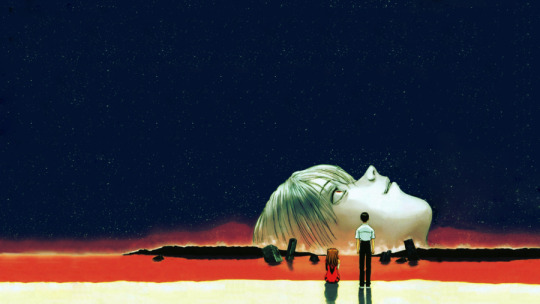

44 notes
·
View notes
Text
Why are the English dubs of Rumiko Takahashi shows so terrible?
I am watching InuYasha right now, and the English dub always comes up before the Japanese one. This is natural, but, to me, it sounds like the voice actors are just phoning in it the whole time, and I can’t get through a minute of InuYasha sounding so abrasive and Kagome sounding like every romantic bone in her body has been removed before clicking off and finding the original. I watched all of Ranma 1/2 earlier this semester because it quickly became one of my favorites, but it was the exact same problem. I tried a quick google search to see if others felt the same way. Everyone agreed that all of the Urusei Yatsura dubs are terrible, but everyone said that they prefer the dub to the sub for Inuyasha while admitting that it was probably due to nostalgia.
This I totally get. As someone watching these shows for the first time now, I know that I am having a completely unique experience compared to the majority of Americans who had InuYasha airing next to Dragon Ball as a mainstream cartoon before anime was thought of something as different. (Btw, that baffles me because the demons in this show are horrifying and resemble the ones in the grim 80s OVAs. It doesn’t look like something I would expect American kids to watch.) I am totally of the mindset that dubs vs subs should be a question for a show-by-show basis. I grew up with Pokémon in the same way. It doesn’t seem to me like any of them were phoning in it on that show. All of their character seem perfectly expressive and fitting. However, this could be nostalgia. I feel the same way about Dragon Ball. All of the English voices seem to fit, and when I try to watch it in Japanese the shrill voice of the woman actor for Goku throws me off the whole time. There are plenty of shows, though, that I have watched as an adult and prefer the dubs for. K-On! seemed to have no trouble doing it right. I watched Evangelion’s dub first and then watched the sub because I saw a post showing that enough of the character’s dialogue had been changed that it completely changed their character. After watching it, I ended up deciding that the poster was ignoring the fact that subtitles are just as much a translation as a dubbing, therefore just as much will be naturally lost in the translation. I also felt that all of the English Evangelion voices did a fine job keeping the characters in tact. Shows like those make it to where it leaves it up to your preference. Cowboy Bebop is one of the only shows where the English dub is definitely preferable to the sub. Part of that is due to the fact that it was made with Western audiences in mind. Another part is that most people here originally saw it on Toonami (once again, not the case for me). A lot of it is just Steve Blum being one of the best in the business.
One person on the forum I read talked about how they had tried the sub for InuYasha and found that it had plenty of flaws. This is accurate. I have definitely noticed it. Once, I could clearly hear Kagome say “Baka” but the subtitle read “I hate you.” There have been many times I see a character speak for a while and the subtitles just have two words. (This is completely possible. Often a thing in translating any language. I’ll just never know how much is lost without knowing the language anyway.) After a while in the series, Hojo started calling Kagome “Higurashi”, but the subtitle would read “Kagome.” The dub would likely do the same thing, but it’s still distracting when you can hear it is different. In one episode, everyone is referring to a demon that has appeared, and they use four different words for “Oni”: demon, beast, specter, and ogre. That was confusing. Still, my understanding that this is just how translations across different cultures works makes me feel most of this is forgivable.
If I had to guess why I have this dissenting opinion on this show’s dub, it would have to be me seeing it as the actors “phoning it in.” Two of my other favorite shows that I have watched recently are KonoSuba and Bakemonogatari. I can’t bring my self to call the rest of Monogatari a favorite because of how creepy it gets with its female cast. They gear the sexualization of lolis and sisters up to 11 after the first season, and I could not take it. I was so glad to watch DemolitionD’s video and see that I was not alone in that sentiment. The reasons that Bakemonogatari is one of my favorites is the romance between Koyomi and Hitagi, the experimental and stellar animation, and the voice acting. Every character sounds distinctly of themselves, and they are clearly working their hardest at making Nisio Isin’s weird-ass writing fire on all cylinders. KonoSuba’s voices sound so great because of the way Digibro put it in his video. KonoSuba’s comedy is actually funny, compared to most comedy anime (like the English dubs of Ranma 1/2 and InuYasha), because the actors sound like they’re having such a good time with it. You can hear their passion and their fun.
Another person on the forum said that they hated InuYasha’s Japanese voice because he sounded like some whiny 14-year-old. I was ecstatic when I heard InuYasha’s voice because I knew it was Ranma’s. They were able to bring him back. Many people notice the 1 to 1 ratio of characters from both series, and InuYasha is definitely Ranma and Kagome is definitely Akane. Ranma and InuYasha’s voices are energetic and cocky, not constantly abrasive like in the English. Akane is supposed to both be cute in moments and the aggressive “tomboy” in others. The English voice comes off as the adult woman that it is, not a 16-year-old, and she never sounds cute. All of the characters sound bland and flat in the American versions. In the Japanese, the energy is constant. It seems like character assassination.
Maybe it makes it into two different shows entirely: the anime and the cartoon. The memories of the commercial for the Ranma 1/2 movie with Akane’s voice narrating that was at the end of my Pokémon VHS’s as a kid are what inspired me to check the show out in the first place. In the American version, the cast’s trip to China looks as exotic as the Japanese setting that they are normally in.
Despite all I just said, I tried out Spanish dubs for both and Pokémon and Dragon Ball, and they don’t seem to suffer from the same problem. Maybe that’s what happens when you don’t have cartoons made at home to work with.
#anyone else have this experience?#please#i need to know if I'm alone on this#dubs vs subs#ranma 1/2#inuyasha#rumiko takahashi#anime#i know it's long#but please read
2 notes
·
View notes
Text
Anime Spring 2018 Final Impressions + Plans for Summer
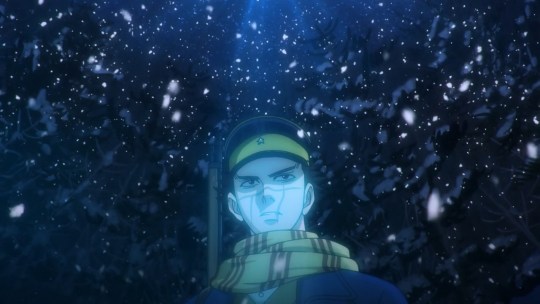
It’s been a long time since I made the last post on every anime I watched on winter, or posting anything on Tumblr in general, it’s time to come back to talk about what anime I’ve watched this spring season and what I’m going to watch this summer.
WARNING: This list may contain spoilers.
Spring 2018
Golden Kamuy: I’ve looked this one this entire season, even though I may not know much, after watching a few episodes, I was definitely impressed, but there are a few people who are disappointed with how the anime turned out, I kind of understand that, but at the same time it leaves me a sour taste in my mouth.
I’m happy season 2 got announced for October, definitely looking forward for more.
High School DXD Hero: I’ve always been skeptical about this season just by the new art style alone, even if it’s by the same studio that made the Citrus anime, but it seems like Passione pulled it off.
Not only the art is rather nice, as I stated, it looks to be faithful to the light novels, they retconned the Juggernaut Drive moment from Born from episode 0, it took me by surprise and learning that the rest of Born was anime original ruined my life and everything I’ve seen has changed.
Steins;Gate 0: Not a lot to add, but it’s definitely one of the strongest series I’ve seen this season so far.
Tokyo Ghoul:re: As someone who hasn’t read the Tokyo Ghoul:re manga, I’d say this one was decent. I saw this ComicBook post where fans were disappointed by the season finale, but hey, there’s season 2 coming in October.
(Man, what’s with these shows having season 2 in Fall?)
My Hero Academia season 3: It’s lower in my list because, while MHA is really good, I read the manga and I pretty much know everything that happens, even if I forget what happened since it’s been ages since I read the chapters the anime adapts, at least they refresh my memory.
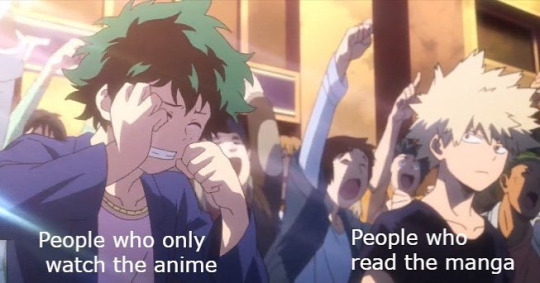
Lupin the 3rd Part 5: This one is good, my only problem is that every few episodes with storylines end, there are those extra episodes that take place in previous jackets, like red jacket and pink jacket Lupin, I can’t help but think those are filler. It’s probably my first time I’ve been mad to filler.
Persona 5: The Animation: Totally did not expect the problems P5A has at all, from animation quality, like terrible fight scenes, to pacing issues, like everything is happening so fast and A-1 decided to rush the 100 hour plot into a 25 episode series. At least it looks better than Persona 4: The Animation.
Given by the episode count I mentioned, I’m looking forward to the surprise teased by the director, I hope I see a lot of people lose their shit like Darling in the Franxx (Heh, A-1), I kind of have the guilty pleassure to see people suffer in this case.
Caligula: This one I really was looking forward to hate. The animation was decent and all but all I can think of is the story, I really don’t like the world at all and I probably don’t care for any of the characters, especially Ritsu.
At the end of episode 10, Ritsu left Mobius and came back to reality alone while all of his friends are left behind, by that point, for some reason I thought “I officially hate Ritsu for that!”, but the more I waited, the less I considered that idea and decided to drop it.
By episode 11, it’s where things are getting worse: The Ritsu we were seeing all along wasn’t even Shikishima Ritsu, it’s a dude called Tachibana Shingo...
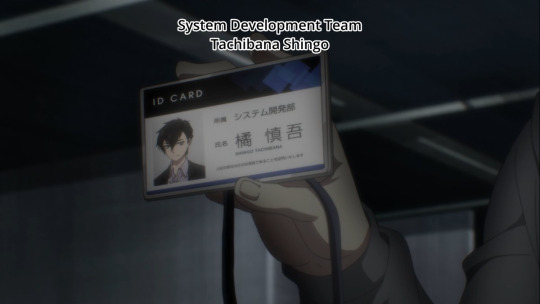
...and this dude right here IS THE REAL SHIKISHIMA RITSU!
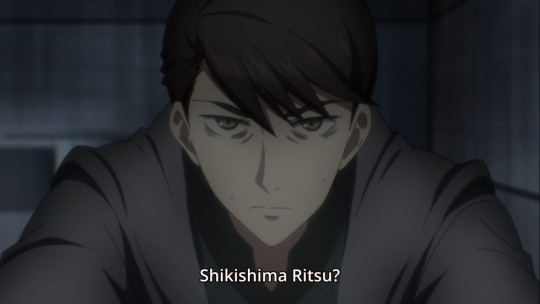
LIKE... WHAT?!
I thought Mobius Ritsu was Shingo who took Ritsu’s name but it’s actually the real Ritsu who took Shingo’s likeness. Why? Why would he do that? It’s not even explained. (Not sure if the game does)
I wanted to drop around episode 8 but I was 4 episodes left to finish watching this trash, and the more I saw it, I felt interested to know what was going on in the story.
I cared less about everything that happened in this show. It’s not offensively bad as 18if, but seriously, the world of Caligula sucks.
The only highlight of the series I’d give credits for are the post-credits teasers by Pop Team Epic creator, Okawa bkub.
Winter 2018 ongoing
Darling in the Franxx: Darling in the Franxx has grown to be the most divisive series to date, mainly from the “Bitchigo” controversy ever since.
While I definitely enjoy the series and I feel defensive about it, I can’t help but think that this is Trigger (and A-1)’s most controversial anime they’ve produced to have such fan outrage. Speaking of which, I don’t think it’s even being animated by Trigger anymore, it’s probably only A-1 alone along with Trigger animators and they just slapped the Trigger name on the credits. (I’m probably exaggerating), and Darling in the Franxx is not even on Trigger’s website!
If this is another one of Trigger’s big flops (The second one being Kiznaiver which WatchMojo called it “disappointing” which made me pissed so bad considering that I loved Kiznaiver, fucking thanks for the trauma, you cunts. (Don’t ask)), then Trigger, as storytellers, have become one-hit wonders, and that one hit is Kill La Kill. (Speaking of which, it’s getting a video game... developed by the people who made Little Witch Academia: Chamber of Time, which turned out hot garbage, RIP)
As of the writing of this post, the series hasn’t ended yet, so we’re still gonna have to wait how the ending will turn out.
Toji no Miko: This one was alright, for some reason I expected the second cour to be somewhat time-wasting and trying to figure out the story because I was satisfied with the end of the first cour, but this one was decent.
Even if the anime series ended, while the mobage is currently on existence, I’ll never stop making Kancolle x Touken Ranbu jokes, at least the series had its own identity to make up for it.
Grancrest Senki: This one I was the least hopeful to watch, though not as trash as Caligula per se, but it’s just generic fantasy with some political drama, and ridiculously violent (Which there’s nothing wrong with it but the amount of gore is really something from a fantasy anime).
There were a couple of good moments but overall, it was meh.
Cardcaptor Sakura Clear Card: I’m a little surprised that Cardcaptor Sakura Clear Card ended with 22 episodes as opposed to 24 or 25 episodes, overall, I enjoyed the series, hopefully we won’t wait for a long time for another season.
Plans for Summer
Attack on Titan season 3: Reminder that we didn’t have to wait for another 4 years for another Attack on Titan season.
Angels of Death: This one has the potential to be one of the better anime adaptations of an RPG Maker game, unlike Ao Oni which failed spectacularly, considered that the Angels of Death anime is being made by JC Staff.
As of the writing of this video, it’s now confirmed that the total of episodes was 16 episodes, 12 of the regular series, and 4 OVA.
Overlord III: It’s still hard to believe that Overlord II was a winter show and this new season is a summer show, considering that I normally would expect shows having two seasons between winter and fall (Such as Shinmai Maou no Testament (2015) and Bubuki Buranki (2016).)
Yuuna and the Haunted Hot Springs: All I can think of is the titular character, Yuuna, is cute, and hot springs, what’s not to like?
Fate/Extra: Last Encore Illustrais Geocentrism: It still feels weird that Last Encore ended with 10 episodes, but at least there’s going to be more, but it’s going to be a two hour special, in two separate episodes. I thought I’ve seen sources that it was going to be episodes 11-13, I’ve seen a lot of sources and they confuse the heck out of me.
(Finally, a good line-up to watch)
BONUS: FLCL Progressive: Technically, FLCL Progressive came out on June 2nd on Adult Swim/Toonami, unlike the majority of the shows are all July shows.
FLCL Progressive and Alternative have quite the unique releases.
I was so baffled that many of the people I talk with were skeptical about FLCL Progressive, there were even stories of the original creator not wanting to make a sequel in the first place, I never gave a crap and ignored to what they said and just moved on to watch it.
After the first episode, it seems like the reactions were mostly positive (Maybe because a lot of people must be more newcomers than a few veteran FLCL fans), though the one thing that cringed me out was the part where Haruko (disguised as a teacher) made everyone watch porn.
Also, my bigger problem with watching FLCL Progressive (and Alternative) is that I have to watch them English dubbed and the subs got delayed until November (yes, that long; I’m not an English dubbed person, okay?).
Speaking of problems, as I mentioned that it was English dubbed, the parts where the characters say Japanese phrases is absolutely cringey as fuck, and with episode 4, at the beginning of the episode, Hidomi made a Jacksepticeye reference by saying “TOP OF THE MORNING!” and that triggered me so bad.
Speaking of Hidomi Hibajiri, she’s like my only highlight of this entire season, she’s such a cutie.
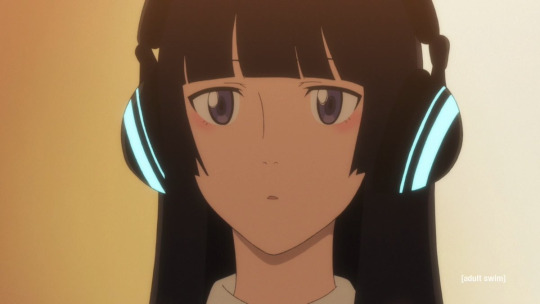
Like the original FLCL, Progressive and Alternative (I keep counting that one a lot, but, since it’s released on September, it still falls into Summer, I guess?) have 6 episodes, so as of the writing of this post, which ironically it’s almost 2 AM and it’s saturday, so new episode tonight, there’s at least going to be one more episode to end, and Alternative, while the first episode was released as a surprise release on April Fools, the rest of the episodes will be on September.
I wanted to add Tensai Bakabon to the list but now my interest to watch has turned off and I prefer Osomatsu-san over this one (This and Osomatsu-kun are made by Fujio Akatsuka and they’re being animated by Pierrot).
I hope you enjoyed my list of everything I saw this spring (while tryhard reviewing them in the process) and what I plan to watch this summer.
Twitter: @HKomaeda
0 notes